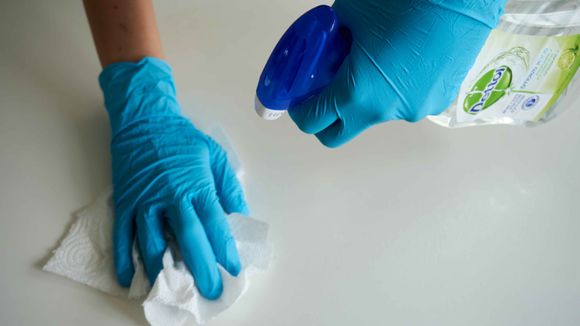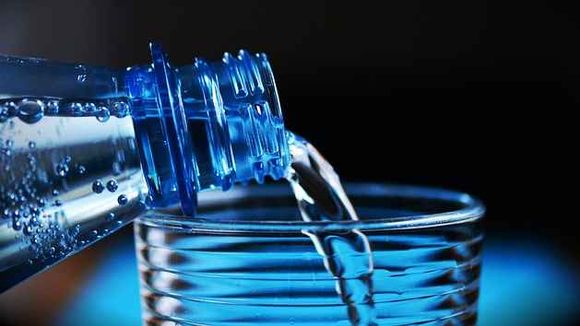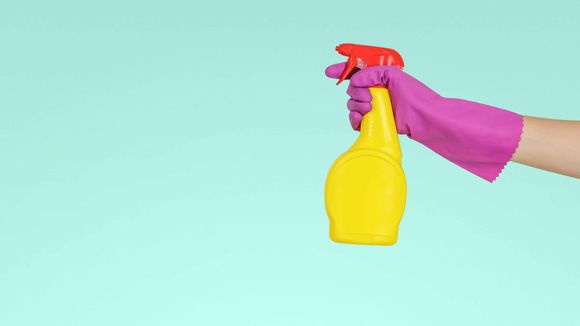Everyday Chemicals Carry a Toxic Burden
Potentially dangerous chemicals can be found in every room in your home. If not stored or used properly, these products can cause mild to serious and even life-threatening health problems for you or your children. Keep in mind that most household cleaning products and pesticides are relatively safe when used as directed, and that the toxicity level of a product depends on the dosage of the product used (never use more than the amount indicated on the label) and duration of exposure to the product.
Of course, there are other toxins that are found in cosmetics or food products, as well as those in kitchen utensils and elsewhere. It is difficult to limit them if we do not first know that the products themselves contain toxins. Everyday household products that contain chemicals and hazardous substances include:
- Cosmetics and toiletries, e.g. soap, shampoo, toothpaste, shaving products, insect repellents, sunscreens and make-up
- Toys, crayons and articles for children
- Fuel, e.g. LPG for barbecues and petrol stored for lawnmowers or motor vehicles
- Horticultural products, such as weed repellents and pesticides
- Household cleaners such as sprays, detergent and washing powder, softeners, bleaching products and anti-stain products
- Paint, paint thinners and solvents
- Products for pets, e.g. preparations against fleas and worms and shampoo for pets
- Poison, such as insecticides and bait for pests and insects
- Preparations for cleaning of spa and swimming pools

What are the most common toxins that surround us?

Among the most common toxic chemicals are organophosphates, flame retardants and phthalates, can be found in food, plastics, furniture, food packaging, cookware, boxes, carpets, shower curtains, electronics and even hair shampoo. They are almost all around us.
Scientists and researchers believe that many of these chemicals can be carcinogenic or wreak havoc on our hormones regulating various processes in the body. But the effects of these chemicals may be most severe on a baby's developing brain.
Brain development is most complete and fastest in the first nine months, that is, prenatally. During this time, neural connections and pathways develop. Any interference from physical stress, such as a toxic chemical or other stressor, can disrupt this natural progression, which is so delicate and complex. Therefore, these are the toxins that should be avoided during this period, as well as later in life.
Organophosphate pesticides
Organophosphate pesticides are a class of neurotoxic chemicals used as combat agents in the 1930s. Today, however, they account for about half of all pesticides used in the U.S., and possibly other countries as well. And they can make their way to the crops we use as food sources. Areas where pesticides are sprayed intensively, such as farms, may have higher exposure levels.
Children exposed to higher levels of these pesticides have been found to have a higher rate of attention deficit hyperactivity disorder.
One way to reduce your exposure to organophosphate pesticides is by eating organic products and using alternative pest control methods if you are engaged in growing agricultural produce.
Phthalates
These chemicals soften plastics and help fragrances and chemicals bind together. Exposure to phthalates has been associated with lower levels of IQ. 1
Phthalates are commonly found in shampoos, conditioners, body sprays, hair sprays, perfumes, colognes, soap, nail polish, shower curtains, medical tubes, intravenous bags, vinyl flooring and wall coverings, food packaging, and coatings on extended-release pharmaceuticals.
You can reduce your exposure to phthalates by using fragrance-free lotions and detergents; if you heat food in the microwave in glass containers, not in plastic ones; using fragrance-free cleaners and avoiding air and plastic fresheners designated No. 3 (PVC), No. 6 (PS) and No. 7 (PC). 2

Polybrominated diphenyl ethers
These chemicals are used as flame retardants (can slow down the flame speed). They can be found in televisions, computers, insulation products and foam products, including toys and baby pillows, in many items such as carpet mats, furniture foam, appliances and electrical and electronic equipment, as well as building and automotive materials.
The products can release ethers that accumulate as dust. Based on experimental animal studies, toxicological endpoints of exposure to polybrominated diphenyl ethers probably include disruption of thyroid homeostasis, neurodevelopmental deficits, reproductive changes, and even cancer. Pre- and/or postnatal exposure to these ethers can cause long-term behavioral abnormalities, especially on the motor activity and cognition of the baby. 3
There is no database or anything like that listing which products these ethers contain, but we can still limit exposure by looking for products that do not contain such flame retardants.
Experts recommend replacing products such as sofas and pillows that have open foam and using a high-performance HEPA filter to clean dust in the premises. 4
Air pollutants
Air pollution from burning fossil fuels such as coal, oil or gas is usually associated with respiratory problems. However, these pollutants may also include nitrogen dioxide, formaldehyde and benzene.
Higher exposure to air pollutants is associated with lower birth weight, premature birth and congenital heart defects. The World Health Organization (WHO) considers exposure to benzene a major public health problem.
In addition to trying to avoid contaminated areas, try to avoid buying furniture from particle board, plywood or pressed wood. Many of these products use adhesives containing formaldehyde.
Lead
Lead is a naturally occurring metal. Leaded gasoline was banned in the 1970s, but can still be found in older homes that use lead paint. Lead can also make its way into the water due to corrosion by old water pipes. Lead is also used in various products such as industrial paints, automotive batteries and wheel weights.
Lead exposure has been associated with ADHD, lower IQ and developmental delays, as well as limiting intellectual development and slowing reflexes. 5
Babies and young children are most at risk of lead exposure because they often put their hands and toys in their mouths, and they may have had contact with lead in dust.

Mercury
Mercury is a naturally occurring element, but can also be released into the environment by the combustion of coal and oil. Mercury can also be found in some household items, such as thermometers, light bulbs and older models of dryers and washing machines. Mercury in the environment can make its way into fish and shellfish. Some fish, such as some tuna species, may have higher mercury concentrations. 6
Polychlorinated biphenyls
Polychlorinated biphenyls are chemicals already banned in the United States in 1979 because they harm human health and the environment. From the 1920s until their ban, about 680,000 tons were produced for microscope oils, electrical insulators, capacitors and electrical appliances such as televisions or refrigerators. They have been used before on dirt roads to preserve dust before some of the unintended consequences of widespread use are understood.
The most commonly observed health effects in humans exposed to large amounts of biphenyls are skin diseases such as acne and rashes. Studies in workers exposed to these toxins have shown changes in blood and urine that may indicate liver damage.
Other effects of polychlorinated biphenyls in animals have been identified, which include changes in the immune system, behavioral changes and impaired reproduction. There is evidence that a group of Michigan children whose mothers were exposed to biphenyls had reduced birth weight and head size, lower scores on standardized memory tests, psychomotor and behavioral tests, and decreased IQ. These effects lasted at least 7 years. 7









